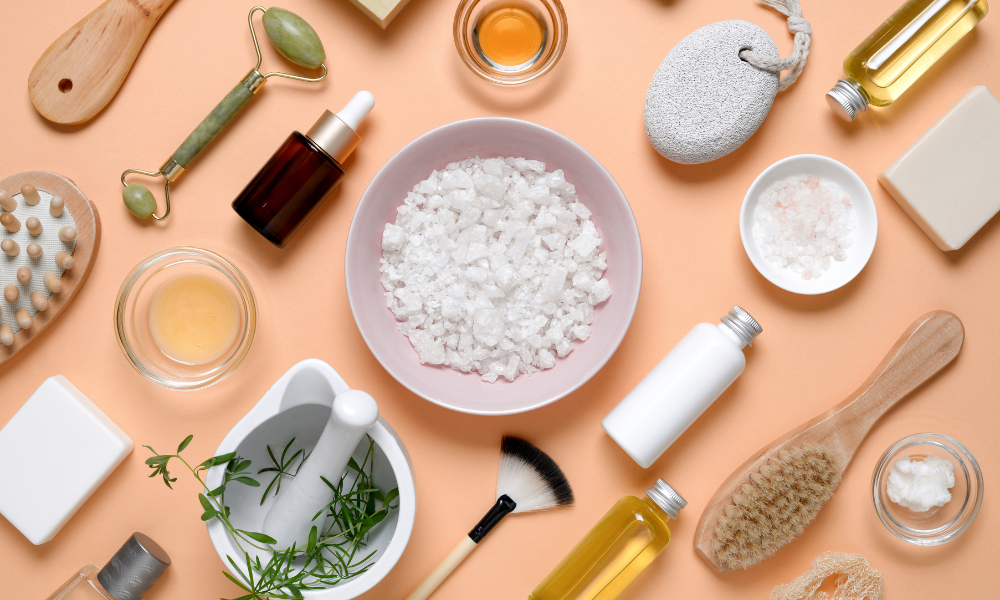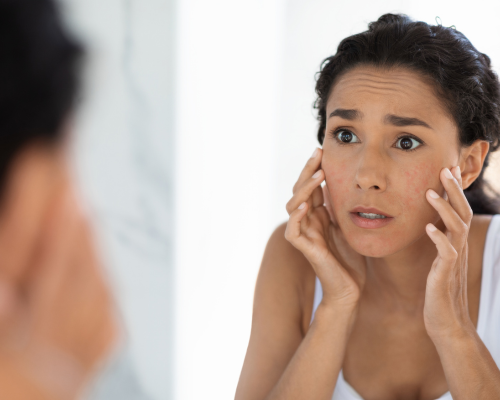
Ice pick scars: deep, stubborn, and unapologetically visible. They don’t fade with time, but with the right treatment and real...
Ice pick scars are one of the most common types of acne scars — and also some of the most challenging to treat. They appear as deep, narrow, pitted scars that extend into the skin, resembling marks left by a sharp object like an ice pick (hence the name).
These scars form when severe acne (especially cystic acne) damages the skin tissue, and the body doesn’t produce enough collagen to fully repair it. Unlike surface-level blemishes, ice pick scars reach deep into the dermis, which makes over-the-counter treatments less effective on their own.
In this article, we’ll break down what causes ice pick scars, what makes them different from other acne scars, and the most effective, evidence-based treatments available in 2025.
They differ from:
Ice pick scars develop when:
Genetics, poor wound healing, and delayed or improper acne treatment can also increase your risk of developing ice pick scars.

There’s no one-size-fits-all solution, but a combination of clinical procedures and skincare can deliver significant results. Here are the most effective treatment options, starting with professional methods:

While at-home skincare can’t completely remove ice pick scars due to their depth, the right routine can support professional treatments, improve skin texture, prevent further damage, and enhance collagen production. Here’s a detailed look at the most effective options:
What they do:
When and how to use:
Important Mixing Rules:
Who should avoid:
Recommended Products:
When to expect results:
What it does:
When and how to use:
Important Mixing Rules:
Who should not skip it:
Recommended Products:
When to expect results:
What it does:
When and how to use:
Important Mixing Rules:
Who should avoid:
Recommended Products:
When to expect results:
What they do:
When and how to use:
Important Mixing Rules:
Who should avoid:
Recommended Products:
When to expect results:
While at-home skincare can’t completely remove ice pick scars due to their depth, the right routine can support professional treatments, improve skin texture, prevent further damage, and enhance collagen production. Here’s a detailed look at the most effective options:
Treatment | What it Does | When and How to Use | Important Mixing Rules | Who Should Avoid | When to Expect Results |
Retinoids (Tretinoin / Adapalene) | Boosts cell turnover, stimulates collagen, fades dark spots | Use at night after cleansing; start 2–3x/week and build up to nightly | Avoid mixing with AHAs/BHAs/benzoyl peroxide on same night; safe with niacinamide | Pregnant/breastfeeding individuals; very sensitive or compromised skin | 3–6 months for visible texture and tone improvement |
Sunscreen (Broad- Spectrum SPF 30+) | Protects from UV damage; prevents scars from darkening | Every morning, reapply every 2 hours when outdoors | Safe to layer over all actives; must be last step in morning routine | No one — everyone needs sunscreen | Immediate protection; long-term prevention of pigmentation |
Niacinamide (Vitamin B3) | Reduces redness, minimizes pores, regulates oil production | Morning and/or night after cleansing, before heavier creams | Safe with retinoids, AHAs/BHAs, and vitamin C | Extremely reactive skin may experience mild flushing | 4–8 weeks for smoother texture and reduced oiliness |
Exfoliation (AHA/BHA) | AHAs exfoliate surface; BHAs unclog pores and smooth skin | 1–3x per week at night after cleansing | Avoid mixing with retinoids on the same night; alternate usage | Very sensitive skin, eczema, rosacea, or open wounds | 2–4 weeks for initial brightness; 3–6 months for texture improvement |
No — at-home treatments can improve skin quality, reduce pigmentation, and make scars less noticeable, but they cannot physically “fill in” deep ice pick scars. For significant scar remodeling, clinical treatments like TCA CROSS, microneedling, lasers, or punch excision are necessary.
However, good skincare dramatically boosts the results of professional treatments and prevents scars from looking worse over time.
The best approach depends on:
Combination therapy is usually the most effective. For example:
Always consult with a board-certified dermatologist or aesthetic physician experienced with acne scar treatments for personalized advice.

Ice pick scars are stubborn, but improvement is absolutely possible with the right combination of professional treatments, supportive skincare, and healthy habits. Patience and consistency are key — as is working with a qualified expert who understands how to treat your specific skin needs.
On a personal note, I’ve been dealing with ice pick scars myself. Over time, I’ve seen real improvements by using tretinoin regularly and adding supportive products like the Laneige Water Sleeping Mask to keep my skin hydrated. I also noticed that when I don’t get enough sleep or when I travel (probably due to sudden changes in temperature and routine), my scars appear much more visible.
In addition to topical treatments, I take collagen supplements and drink fresh shots made from ginger, carrots, and oranges to support my skin from the inside out. While no single method works overnight, combining good skincare with a healthier lifestyle has made a real difference for me — and it can for you too.
Healing from acne scars is a long journey, but every small step forward is worth it.
Browse and Read the Latest Stuff

Ice pick scars: deep, stubborn, and unapologetically visible. They don’t fade with time, but with the right treatment and real...